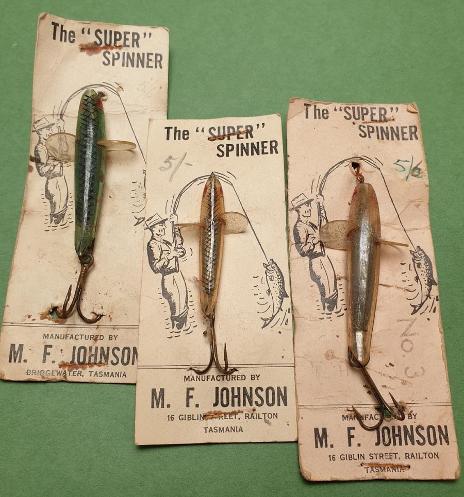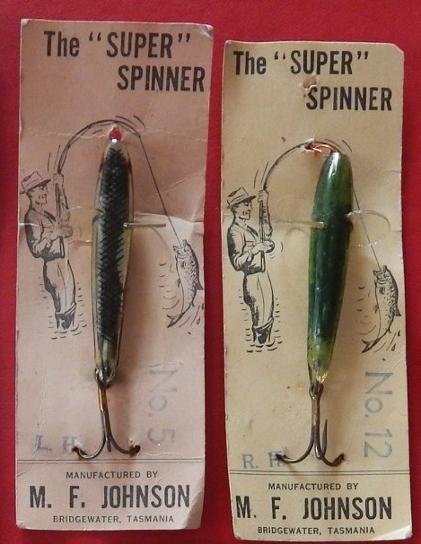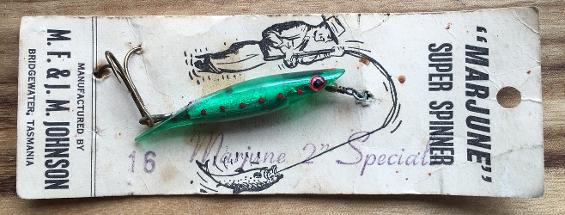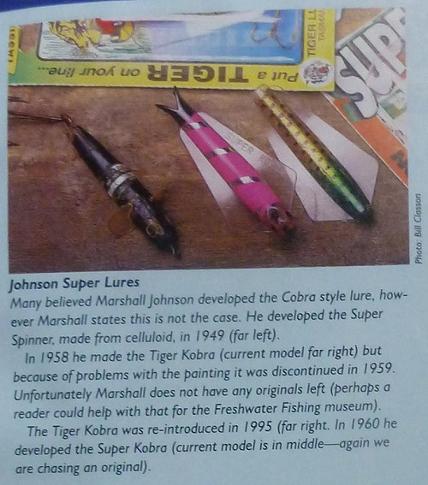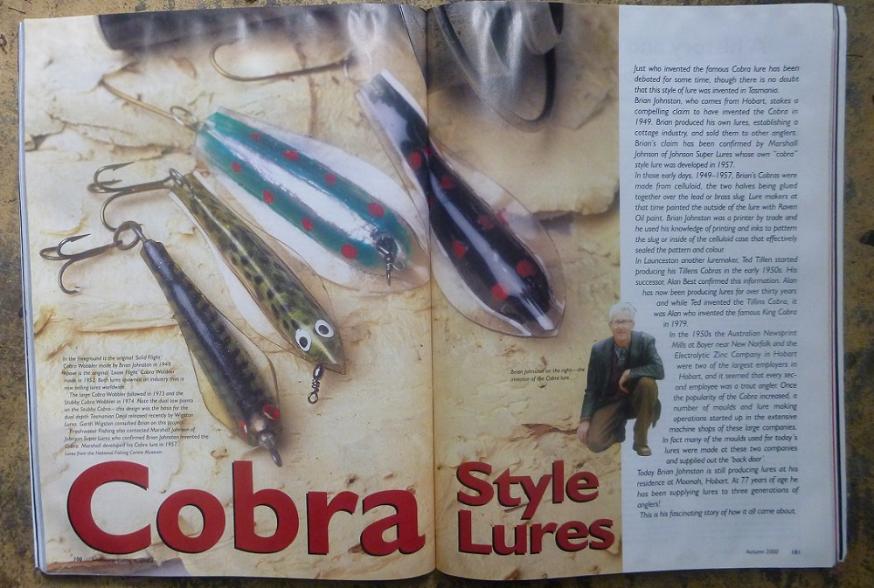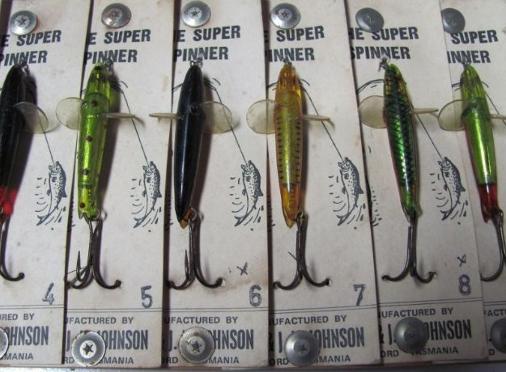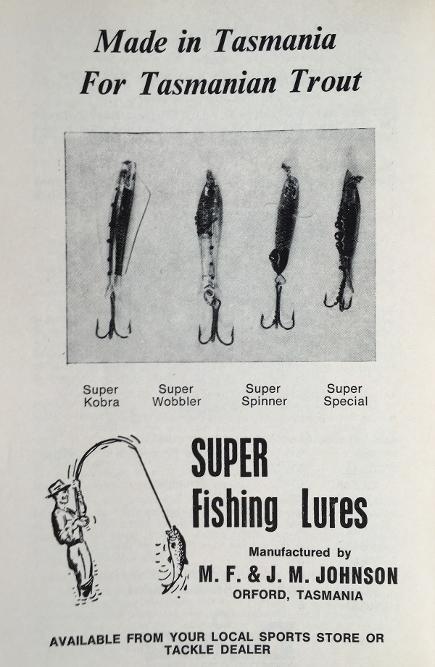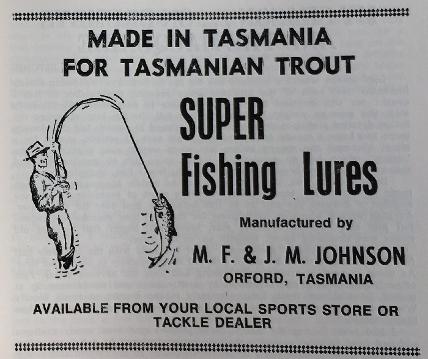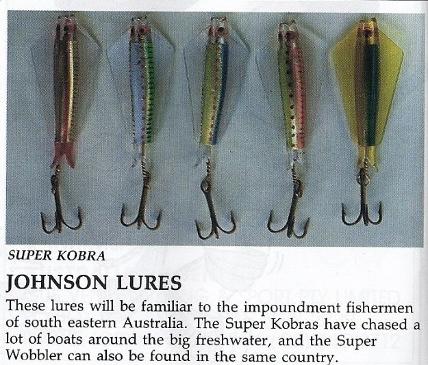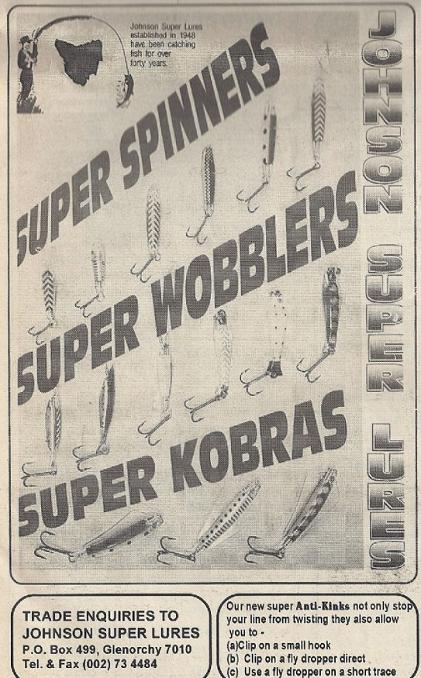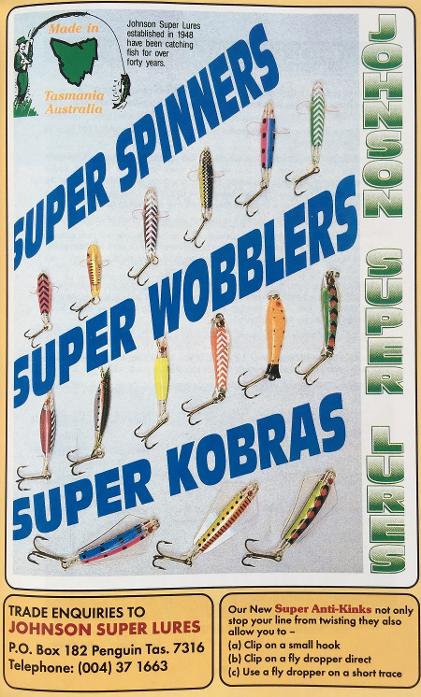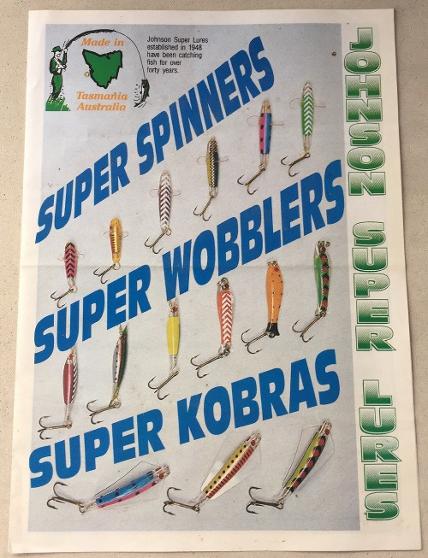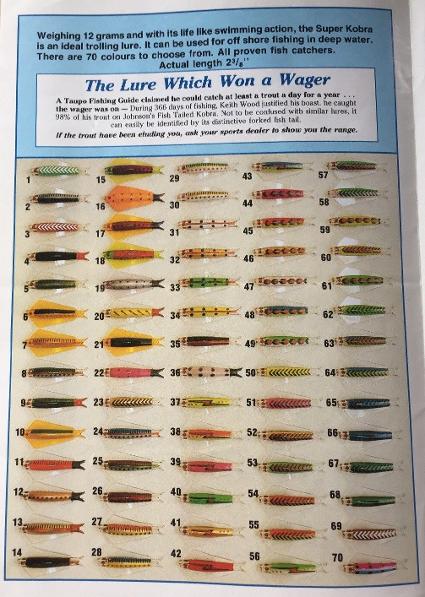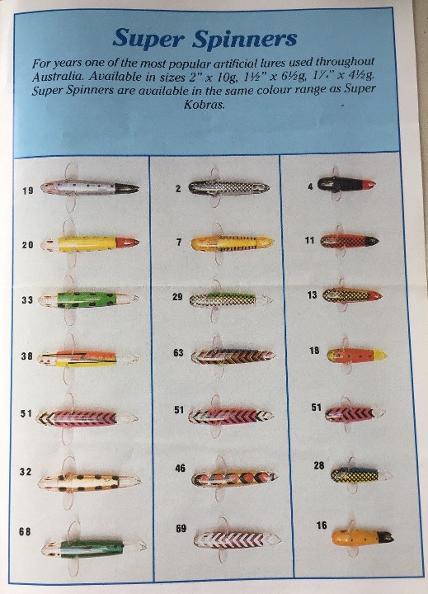Johnson Super Lures - TAS :
Johnson Lures - TAS:
Marshall Johnson made his first Devon minnow around 1950 however by 1957 he had developed a plastic injection moulding technique for making the Cobra style of lure and released his 'Tiger Kobra'. Before this the lures were made by gluing two half shells of celluloid over a lead core. These early lures were painted on the outside with Raven Oil paint. He retired in 1991 and the family continues to run the business.
The cards below are the earliest of the Marshall Johnson cards for the 'Super Spinner' when the lures were being made in Railton and Bridgewater (single name on the cards). Colour codes are stamped with 'No 1 . . . No 2.' as opposed to a single number on later cards. They were issued in left and right spin versions which were also larked on the card. Unsure if the colour codes were later changed as the range was expanded.
The 'Super Special' is shown on two different early cards below which date to the late 1950's/early 1960's when they were made by Marshall in Orford, Tasmania. The card below left is made for Alan Ball Agencies who were a mainland distributor in Melbourne.
Below is a photo of the article 'Cobra Style Lures' from Freshwater Fishing Autumn 2000 which are identified as the original 'Solid Flight' Cobra Wobbler (1949), the 'Loose Flight' Cobra Wobbler (1952). The large cobra wobbler (1973) and the Stubby cobra wobbler (1974). Marshall always identified Brian Johnston as the first inventor of the Cobra style lure. Brian Johnston invented the cobra lure around 1950. In the early days he sold lures commercially through Charles Davis in the Hobart CBD. After a few years he stopped selling through Charles Davis and was making them in his home at Moonah until the last couple of years. There is often some confusion however Brian Johnston had no affiliation with Johnson Lures that were made by Marshall Johnson which became a commercial venture. Johnson lures were readily sold to retail outlets with some sold to mainland Australia. Many localised makers of cobra lures were spawned in crew rooms of small industry in the Hobart/New Norfolk area as shift workers tried their hand and made their own moulds and catching fish in the Derwent River and surrounds. Undoubtedly many of these cottage makers were inspired by the early pioneers like Brian Johnston and Marshall Johnson.
